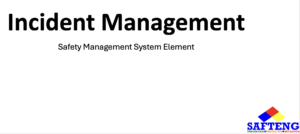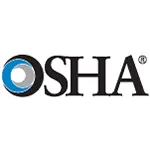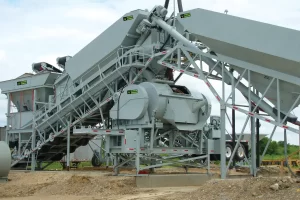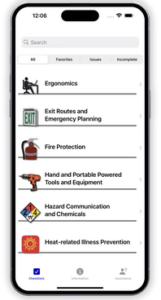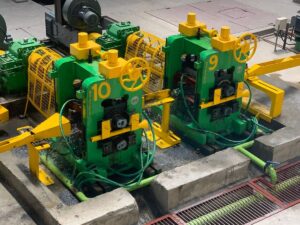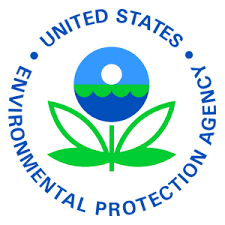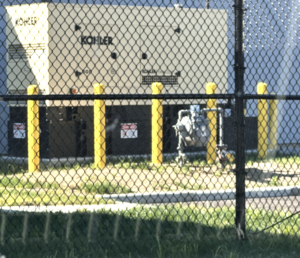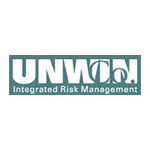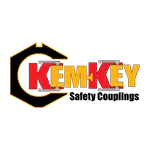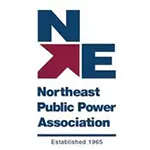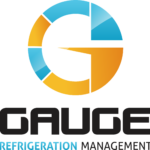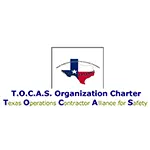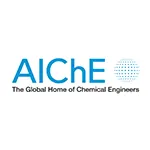Let us help you make sense of PSM / RMP!
My friend Brian Chapin will be offering an open-enrollment PSM/RMP class in Burleson, Texas, July 8th to 11th, 2025. Brian is an absolute pro in NH3 Refrigeration Process Safety. Anyone who attends will also get a FREE membership to SAFTENG. You can get more information on the class with this link.
CLICK HERE to Renew your Membership
CLICK HERE for a NEW Membership
CLICK HERE to see eligibility requirements for FREE Membership
If you have any questions, please contact m
SAFTENG has:
- Over 18,000 categorized unsafe acts/conditions and accident/injury photos
- Over 1,500 ppt's & doc's in the SAFTENG Library
- Over 4,000 Technical Articles on Process Safety, Emergency Response & OSH topics
- Over 450 videos (those not allowed on YouTube Channel)
Many THANKS to my NEW Members and those who CONTINUE to support SAFTENG:









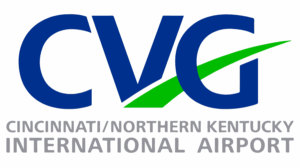


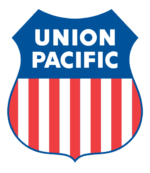

November 11, 2024
Inspections As of the 3rd quarter of the fiscal year (Q3), EPA completed 133 CAA Section 112(r) (Risk Management Program) inspections. Enforcement Cases As of the 3rd quarter of the fiscal year (Q3), EPA took action at 73 facilities to decrease the likelihood of chemical accidents. Sasol Chemicals: In April 2024, EPA finalized a settlement with Sasol Chemicals (Sasol) over alleged violations...
Read More
November 9, 2024
This is one of the most requested presentations I use when working with C-Suite Executives and Senior Safety Leadership.
Safety Leadership and CultureDownload
Read More
November 9, 2024
This is a presentation I use when doing some of my SMS and Incident Management training courses.
Incident Management (SMS)Download
Read More
November 6, 2024
I teach about a dozen flammable liquid courses annually, and it is one of my favorite courses to teach, as I love the technical side of hazardous materials. And my course always starts with a discussion around the 1st step in making a flammable liquid a hazardous material… FLASH POINT. And over the 30+ years, I have been teaching people about flammable liquids when I ask the class to explain...
Read More
November 5, 2024
On January 18, 2024, at 9:15 a.m., Employee #1, 37, was working inside a 7,000-gallon tanker trailer. Employee #1 was tasked with inspecting the damage to the interior of the tanker. Employee #1 was in the early stages of the tank inspection when he lost consciousness. A coworker noticed Employee #1 lost consciousness, and s/he called the foreman to call 9-1-1. The coworker climbed into the tank to...
Read More
November 5, 2024
On April 3, 2024, at 9:00 a.m., an employee, 44, working as a plant operator for a building materials manufacturer was reinstalling mixer blades onto the shaft inside a Vince Hagan HM-10 Horizontal Concrete Mixer. The employee had been on a crew between January 2024 and April 2024 engaged in the shaft and blade replacement and repair project involving the portable concrete mixer. The mixer sits approximately...
Read More
November 5, 2024
A 60-year-old welder fell 32 feet while constructing the leading edge of a storage tank roof. His employer was an aboveground storage tank manufacturer. He had over 40 years of job experience. He was with three other workers constructing the leading edge with sheets of metal sheathing. The roof was 76-feet wide by 34.5-feet high, with a 1 in 12 pitch. He was acting as a “spotter” for a crane operator...
Read More
November 5, 2024
As most of you know, I am a massive fan of the work OR-OSHA does to make our jobs more proficient. This latest publication is a rockstar and something almost every workplace can utilize (for FREE) to make the men and women who do the dirty and dangerous work MORE knowledgeable in Hazard Identification. We all know that Hazard ID is one of the four (4) pillars of a Safety Management System (SMS), and...
Read More
November 5, 2024
The OSHA-NIOSH Small Business Checklist app is designed to improve safety and health at workplaces. The app features a number of self-inspection checklists to help small businesses identify workplace hazards. The OSHA-NIOSH Small Business Checklist App can improve safety and health in the workplace. The app is a free tool that features checklists and other workplace safety and health resources for...
Read More
November 5, 2024
This is a MUST READ for safety professionals engaged in developing, implementing, and managing a LOTO program. The facility was doing everything RIGHT in terms of program, procedures, and training; yet a worker violated LOTO in the presence of the Shift Supervisor who had only been in his role for 1-month. The OSHRC laid out this case in a very easy-to-follow/understand logic, such that I am betting...
Read More
November 4, 2024
Respondent is the owner and operator of a facility that stores, manufactures, and distributes agricultural products, including anhydrous ammonia. The threshold quantity for anhydrous ammonia, as listed in 40 C.F.R. § 68.130, is 10,000 pounds. On or about August 22-23, 2023, a representative of the EPA conducted an inspection of the Respondent’s Facility to determine compliance with Section 112(r) of...
Read More
November 3, 2024
As many of you know, I have a love of bollards. This love has come over many years and many accidents where I have seen them protect a critical asset and PREVENT a serious event. This is a new county building built near my home, and when I drove by, I had to take a double take. Do you see the issue with this design?
Read More



